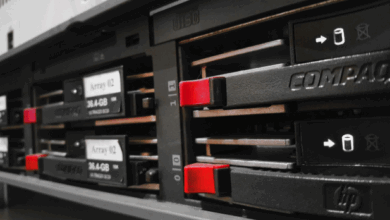Commercial restrooms have evolved far beyond basic functionality. Engineers, data developers, and enterprise leaders now recognize these spaces as opportunities for technological integration that address hygiene, sustainability, and operational efficiency. The top advancements in commercial restroom technology represent a convergence of sensor systems, IoT connectivity, and data analytics that transform how facilities manage their most frequently used spaces.
Sensor-Activated Faucets Optimize Water Usage
Infrared sensor technology has revolutionized water delivery systems in commercial environments. These faucets eliminate physical contact while providing precise control over water flow duration and volume. The core technology relies on infrared sensors that detect motion within a defined range, triggering electromagnetic solenoid valves that control water flow with millisecond precision.
The operational mechanics involve three primary components working in sequence. The infrared sensor emits light that bounces off objects within its detection field. When hands enter this zone, the reflected light triggers a microcontroller that processes the signal and activates the solenoid valve. This valve opens to allow water to flow and closes immediately when the hands exit the detection range.
Advanced automatic faucet systems incorporate adjustable parameters that facilities can configure based on specific requirements. Sensitivity settings determine the activation distance, while flow duration controls prevent water waste. Many systems include temperature regulations to prevent scalding while maintaining energy efficiency.
Integration of aerators enhances water conservation without compromising perceived pressure. These devices mix air with the water stream, reducing volumetric flow rates while maintaining user satisfaction. The combination of precise sensor control and aerator technology delivers significant reductions in water consumption across commercial facilities.
IoT-Enabled Smart Toilets Transform Facility Management
Smart toilets represent a significant leap in restroom technology, integrating multiple systems into a single fixture. These units combine sensor networks, automated cleaning mechanisms, and data-collection capabilities to provide facility managers with actionable insights into usage patterns and maintenance requirements.
The market trajectory reflects growing adoption across commercial sectors. According to industry analysis, the smart toilet market reached $10.11 billion in 2024 with projections of $16.09 billion by 2030, representing an 8.05% compound annual growth rate. This expansion reflects increasing recognition of the operational benefits these systems provide.
Core functionality extends beyond basic automation. Smart toilets incorporate self-cleaning systems that maintain sanitary conditions between uses. Sensor arrays monitor component status and predict maintenance requirements before failures occur. Water usage optimization algorithms adjust flush volume based on waste type, reducing consumption while maintaining performance standards.
Connectivity enables remote monitoring and control through centralized management platforms. Facility managers receive real-time alerts about maintenance needs, supply levels, and usage anomalies. This data-driven approach transforms reactive maintenance into predictive operations, minimizing downtime and optimizing resource allocation.
The technology particularly benefits health care facilities, where infection control remains paramount. Antimicrobial surfaces, combined with automated cleaning cycles, reduce the risk of pathogen transmission. Usage data helps facilities optimize cleaning schedules based on actual traffic patterns, rather than fixed intervals.
Occupancy Sensors Enable Dynamic Resource Management
Occupancy detection technology provides facility managers with precise data about restroom usage patterns. These sensors employ various detection methods, including passive infrared, ultrasonic, and microwave technologies, each offering distinct advantages for different commercial environments.
Passive infrared sensors detect heat signatures from occupants, providing reliable presence detection at low power consumption. Ultrasonic sensors emit high-frequency sound waves that reflect off moving objects, offering coverage in complex layouts where line-of-sight limitations exist. Microwave sensors penetrate walls and partitions, enabling detection across multiple stalls from a single installation point.
The data these systems generate enables sophisticated facility management strategies. Real-time occupancy information helps maintenance teams schedule cleaning during low-traffic periods, minimizing disruption and ensuring sanitary conditions. Historical usage patterns inform staffing decisions and supply ordering, reducing waste while preventing shortages.
Integration with building management systems creates comprehensive facility monitoring. Occupancy data correlates with HVAC operations to optimize ventilation based on actual usage, rather than fixed schedules. Lighting systems only activate in occupied areas, reducing energy consumption while maintaining adequate illumination.
Advanced implementations incorporate queue management functionality. Digital displays outside restrooms indicate availability, reducing congestion and improving user experience in high-traffic facilities. This feature is particularly valuable in airports, entertainment venues, and large office complexes where restroom access affects facility flow.
Antimicrobial Materials Reduce Pathogen Transmission
Surface engineering is a key component of modern restroom hygiene. Antimicrobial materials incorporate metal ions—typically copper or silver—that disrupt bacterial cell membranes, preventing pathogen proliferation on high-touch surfaces. These materials provide continuous protection that supplements regular cleaning protocols.
Implementation extends across multiple surface types. Faucet handles, door hardware, and partition latches benefit from antimicrobial coatings that reduce contamination risk. Newer applications include antimicrobial toilet seats and flush handles that maintain lower pathogen levels between cleaning cycles.
The technology operates through multiple mechanisms. Metal ions interfere with bacterial respiration, preventing energy production. They bind to bacterial DNA, disrupting replication processes. This multi-faceted approach reduces the likelihood of resistance development compared to traditional chemical disinfectants.
Testing protocols verify antimicrobial efficacy across different surface types and usage conditions. Industry standards require materials to demonstrate specific log reductions in bacterial populations over defined time periods. These requirements ensure that products deliver measurable protection rather than marketing claims without scientific validation.
Integration with touchless technology creates layered defense systems. Sensor-activated fixtures eliminate many contact points, while antimicrobial surfaces protect those interactions that remain necessary. This combination addresses multiple transmission pathways, reducing infection risk in commercial environments.
Predictive Maintenance Systems Minimize Downtime
Predictive maintenance technology applies machine learning algorithms to sensor data, identifying failure patterns before equipment stops functioning. These systems monitor parameters including water pressure, electrical current draw, valve operation cycles, and component temperatures to detect anomalies that precede failures.
Implementation requires sensor networks that continuously capture operational data. Pressure transducers monitor water supply lines, detecting gradual restrictions that indicate developing blockages. Current sensors monitor motor performance in hand dryers and automated soap dispensers, detecting increased loads that indicate bearing wear or mechanical binding.
Machine learning models analyze historical failure data to identify predictive indicators. These algorithms identify patterns associated with specific failure modes, enabling targeted interventions before breakdowns occur. The systems automatically generate maintenance work orders when sensor data indicates intervention meets thresholds.
The economic benefits extend beyond reduced downtime. Predictive maintenance enables parts replacement during scheduled service windows, rather than emergency repairs. This approach reduces labor costs while ensuring parts availability through planned procurement, rather than expedited shipping. Facilities avoid the cascading impacts that restroom outages create in commercial environments.
Integration with inventory management systems optimizes supply levels. Consumption data from soap dispensers and paper towel systems trigger automatic reordering when supplies reach minimum thresholds. This automation prevents stockouts while reducing excess inventory carrying costs.
The Path Forward for Commercial Restroom Technology
Advancements in commercial restroom technology demonstrate how engineering innovation addresses operational challenges while improving user experiences. Sensor-activated fixtures, smart toilets, occupancy monitoring, antimicrobial materials, and predictive maintenance create facilities that operate more efficiently while delivering measurable benefits across multiple performance metrics.
These technologies continue evolving as machine learning capabilities improve and sensor costs decline. Future developments will likely incorporate more sophisticated analytics, enabling facilities to optimize operations through comprehensive data analysis. Integration across building systems will deepen, creating holistic management platforms that coordinate restroom operations with broader facility functions.
For enterprise decision-makers, these advancements represent strategic opportunities to reduce operational costs, while demonstrating commitment to sustainability and user experience. The ROI extends beyond direct cost savings to include brand enhancement and competitive differentiation in markets where facility quality influences customer and employee satisfaction.
Implementation requires careful assessment of specific facility requirements and usage patterns. The most effective deployments combine multiple technologies into integrated systems that address particular operational challenges. Success depends on selecting appropriate solutions and implementing them within broader facility management strategies that leverage the data and capabilities these systems provide.




